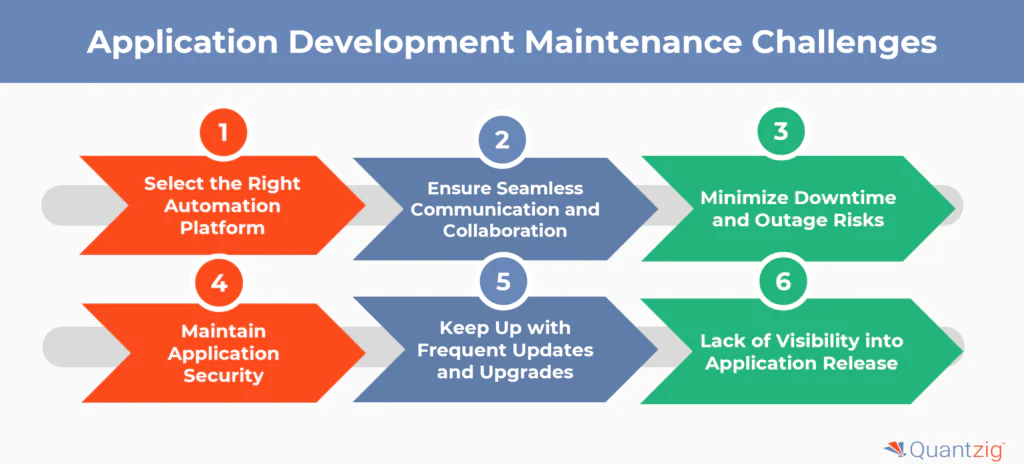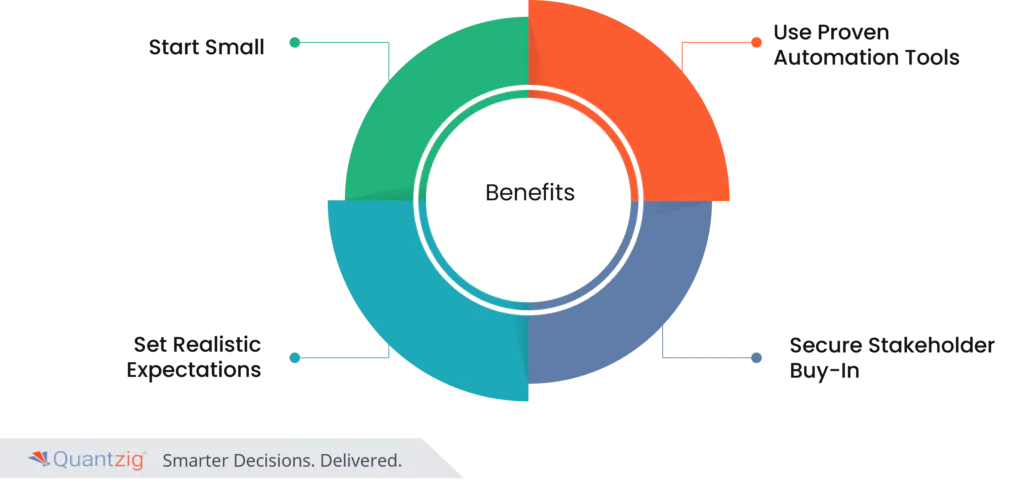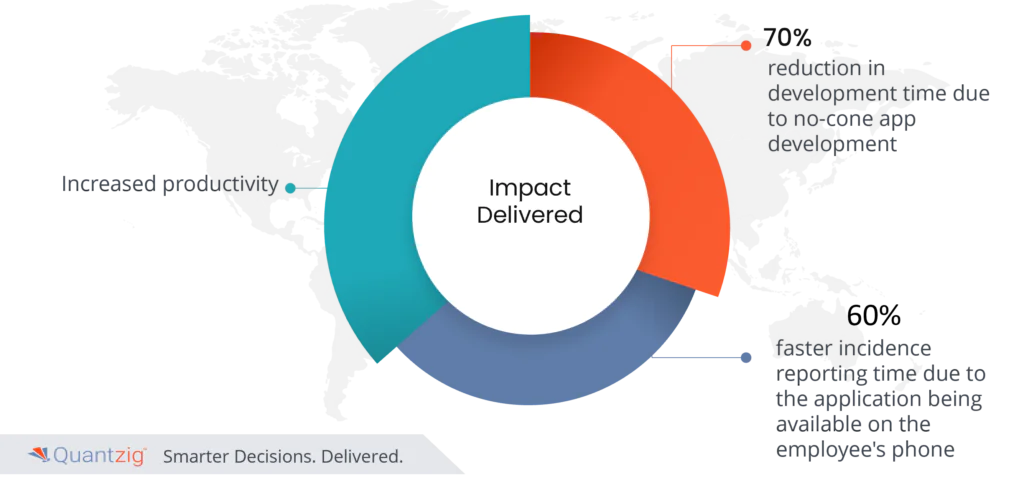
In the modern business landscape, application development and maintenance have emerged as critical drivers of success for organizations worldwide. However, as digital platforms rapidly evolve, so do the challenges inherent in creating and maintaining software applications. From the constantly shifting expectations of users to the breakneck pace of technological advancements, this domain presents a formidable set of obstacles to overcome.
In this article, we explore the challenges of enterprise application development and maintenance, and, more importantly, unveil strategies and insights to overcome these obstacles. By examining these challenges, we aim to uncover the keys to not just surviving but thriving in the complex world of application development and maintenance.
Book a demo to experience the meaningful insights we derive from data through our analytical tools and platform capabilities. Schedule a demo today!

Application development is the process of planning, designing, creating, testing, and deploying software applications to perform various business operations. It involves gathering requirements, prototyping, coding, and ongoing improvements to deliver robust and user-friendly applications . Some key benefits of application development include:
Application maintenance is the process of continually updating, modifying, and reassessing software applications to rectify faults, optimize performance, and keep up with evolving user expectations. It transcends basic bug fixing to also enhance security and augment application capabilities.
Application Development as a Service (ADaaS) is the delivery of application development, deployment, and maintenance services through a cloud-based model, allowing organizations to outsource these needs to a third-party provider. ADaaS offers benefits such as reduced costs, faster time-to-market, scalability, access to expertise, improved efficiency, and ongoing maintenance, without the need for in-house resources and infrastructure. By leveraging the capabilities of ADaaS providers, businesses can focus on their core competencies while benefiting from the expertise and economies of scale offered by the service.

The key challenges of implementing Application Development Maintenance Services include:
By addressing these key challenges through strategic planning, process optimization, and the adoption of appropriate tools and technologies, organizations can successfully implement and maintain their application development and maintenance services.

| Best Practice | Description |
|---|---|
| Start Small | – Begin with a well-defined, manageable automation project – Gain valuable experience and identify potential issues before scaling up – Mitigate risks and build confidence in automation’s benefits |
| Use Proven Automation Tools | – Research and choose automation tools with a proven track record in your industry or domain – Ensure the tool aligns with the specific requirements of the applications you intend to automate – A reliable tool can significantly impact the success of your automation initiatives |
| Secure Stakeholder Buy-In | – Encourage collaboration from the outset to align expectations and goals – Involve all relevant parties, including development, QA, and operations teams – Ensure the automation strategy addresses the unique needs and challenges faced by each team |
| Set Realistic Expectations | – Understand that automation is a powerful tool, but not a one-size-fits-all solution – Recognize that automation can enhance efficiency, reduce repetitive tasks, and improve software quality, but should not be seen as a complete replacement for manual testing or development efforts – Maintain realistic expectations about the capabilities and limitations of automation |
By following these best practices, organizations can effectively overcome the challenges of application development and maintenance, ensuring the successful integration of automation into their software development workflows.
Book a demo to experience the meaningful insights we derive from data through our analytical tools and platform capabilities. Schedule a demo today!

The future of Application Development and Maintenance is poised to be transformative, driven by advancements in various technologies and methodologies. As businesses continue to evolve, the emphasis on integrating custom solutions within the Software Development Lifecycle will become more prominent. This approach ensures that applications are tailored to meet specific needs, enhancing customer satisfaction.
In summary, the future of Application Development and Maintenance will be characterized by the integration of custom solutions, advanced deployment techniques, innovative data management solutions, and comprehensive application maintenance services. These advancements will ensure that applications perform optimally, leading to sustained business growth and high levels of customer satisfaction.

| Client Details | Challenges Faced by the Client | Solutions Offered by Quantzig | Impact Delivered |
|---|---|---|---|
| Retail Company in the US | – Urgency of developing a safety reporting application within a tight timeframe – Limited budget, ruling out licensed products with annual contract costs – Need for low Total Cost of Ownership (TCO) – Balancing speed, affordability, and long-term sustainability | – Designed a comprehensive workforce safety application using Microsoft Power Platform – PowerApps for intuitive user interface – PowerBI for data visualization and analysis – Power Automate for backend processes and automation | – 70% reduction in development time due to no-code app development – 60% faster incidence reporting time due to the application being available on the employee’s phone |
A retail company located in the US
Quantzig successfully designed a comprehensive workforce safety application by harnessing the capabilities of Microsoft Power Platform. PowerApps facilitated the creation of an intuitive user interface, ensuring seamless interaction with the application. Integration with PowerBI enhanced data visualization and analysis, empowering users with actionable insights.
Meanwhile, Power Automate handled the backend processes and automation, streamlining operations and ensuring efficient workflow management. This end-to-end application maintenance support, leveraging the power of Microsoft’s platform, not only enhances workplace safety but also optimizes operational efficiency, demonstrating our commitment to delivering robust and user-friendly applications.
Experience the advantages firsthand by testing a customized complimentary pilot designed to address your specific requirements. Pilot studies are non-committal in nature.
In the ever-evolving landscape of application development and maintenance, challenges are inevitable, but they need not be insurmountable roadblocks. By embracing strategic approaches such as careful tool selection, stakeholder alignment, and realistic expectations, organizations can navigate the complexities with confidence. Starting small and gradually expanding automation efforts allows for a smoother transition and better risk management. Ultimately, the journey is about achieving higher efficiency, improved software quality, and enhanced competitiveness. By addressing these challenges head-on and implementing the right strategies, organizations can not only overcome obstacles but also thrive in the dynamic realm of application development and maintenance.
ADM, or Application Development and Maintenance, in the context of Agile methodologies, refers to the continuous cycle of developing, maintaining, and updating applications. Agile emphasizes iterative development, where application maintenance is integrated into the regular Software Development Lifecycle to provide custom solutions and expert maintenance.
Application maintenance can significantly reduce operational costs by optimizing performance, ensuring applications run efficiently to minimize downtime and resource usage. Productive app updates through regular maintenance prevent major issues, reducing the need for costly emergency fixes. Effective data management solutions reduce redundancy and errors, cutting down on maintenance costs, while streamlined deployment techniques minimize errors and reduce the time spent on fixes.
The frequency of application maintenance depends on the complexity of the applications and industry requirements. Generally, critical systems require weekly or bi-weekly maintenance to ensure business continuity. Less critical applications should be maintained monthly to apply productive app updates and performance tweaks. Comprehensive audits and updates should be performed quarterly or bi-annually.
Application maintenance supports business continuity by ensuring reliability through regular updates and maintenance, preventing unexpected downtimes. Maintaining security with timely patches reduces the risk of data breaches. Ensuring that critical functionalities of applications are maintained prevents disruptions in business operations. Continuous monitoring and optimization of performance help prevent system failures that can halt business activities.
Quantzig offers comprehensive Application Development and Maintenance Services that include custom solutions tailored to meet specific business needs, expert maintenance from a team of specialists providing regular and emergency support, and efficient deployment techniques to reduce downtime and errors. Their data management solutions ensure effective handling of data to support business operations, integrating maintenance into the Software Development Lifecycle for continuous improvement.



Smarter Decisions. Delivered.
The Site uses cookies to record users' preferences in relation to the functionality of accessibility. We, our Affiliates, and our Vendors may store and access cookies on a device, and process personal data including unique identifiers sent by a device, to personalise content, tailor, and report on advertising and to analyse our traffic. By clicking “I’m fine with this”, you are allowing the use of these cookies. You may change your settings based on a legitimate interest at any time, by selecting “Manage Settings” on our site. Please refer to the help guide of your browser for further information on cookies, including how to disable them. Review our Privacy & Cookie Notice.
Privacy & Cookies PolicyThis website uses cookies to improve your experience while you navigate through the website. Out of these, the cookies that are categorized as necessary are stored on your browser as they are essential for the working of basic functionalities of the website. We also use third-party cookies that help us analyze and understand how you use this website. These cookies will be stored in your browser only with your consent. You also have the option to opt-out of these cookies. But opting out of some of these cookies may affect your browsing experience.
Always EnabledThese cookies are necessary for the website to function and cannot be switched off in our systems. They are usually only set in response to actions made by you which amount to a request for services, such as setting your privacy preferences, logging in or filling in forms. These cookies are essential in order to enable You to move around the site and use its features, such as accessing secure areas of the site. These cookies do not store any personally identifiable information.
FunctionalThese cookies enable the website to provide enhanced functionality and personalisation. They may be set by us or by third party providers like Hubspot whose services we have added to our pages. These cookies cannot track your browsing activity on other websites. All information these cookies collect is anonymous and is only used to improve how this website works. If you do not allow these cookies we will not know when you have visited our site and will not be able to monitor its performance.
This website uses Google Analytics, a web analytics service provided by Google, Inc. (Google). These cookies are used to calculate visitor, session, and campaign data, and to keep track of site usage for this site’s analytics report. These cookies store the behaviour of each user’s information such as your login information, what pages you visit, how long you stayed on the page, the device you were using, your time zone, what language you’re using, where you’re logging in from, and the operating system of the device you are on. Such information is necessary for a website’s digital marketing efforts, increasing the chances of campaign success by tailoring content to the target audience.